

Low-Maintenance Indoor Houseplants Your Business Trip or Vacation Won’t Kill
Summary
Reflection Questions
Journal Prompt
Preserving indoor plants as a frequent traveler can seem next to impossible. The absence of regular care, primarily in terms of watering and light management, often leads to the swift deterioration of our leafy companions. Thankfully, those leading busy, travel-intensive lifestyles can select from a wide variety of easy houseplants, including the corn plant, prayer plant, Chinese money plant, mother-in-law’s tongue, and many other relatively low-maintenance indoor plants. These plants tolerate low light, infrequent watering, and other forms of neglect. They are resistant to root rot and other common ailments that debilitate more sensitive indoor plants. We hope this article not only eases the burden of plant care but also enriches your living spaces with enduring natural beauty.
Characteristics of Low-Maintenance Houseplants
Understanding Water and Light Needs
The key to selecting low-maintenance houseplants lies in understanding their basic water and light requirements. Plants ideal for frequent travelers typically thrive in bright indirect light conditions and are relatively drought tolerant.
Such plants can sustain prolonged periods without direct sunlight and are adept at retaining soil moisture, thereby reducing the need for regular watering. This adaptability makes them suitable for varying indoor environments and the absence of caretakers.
Importance of Soil and Pot Selection
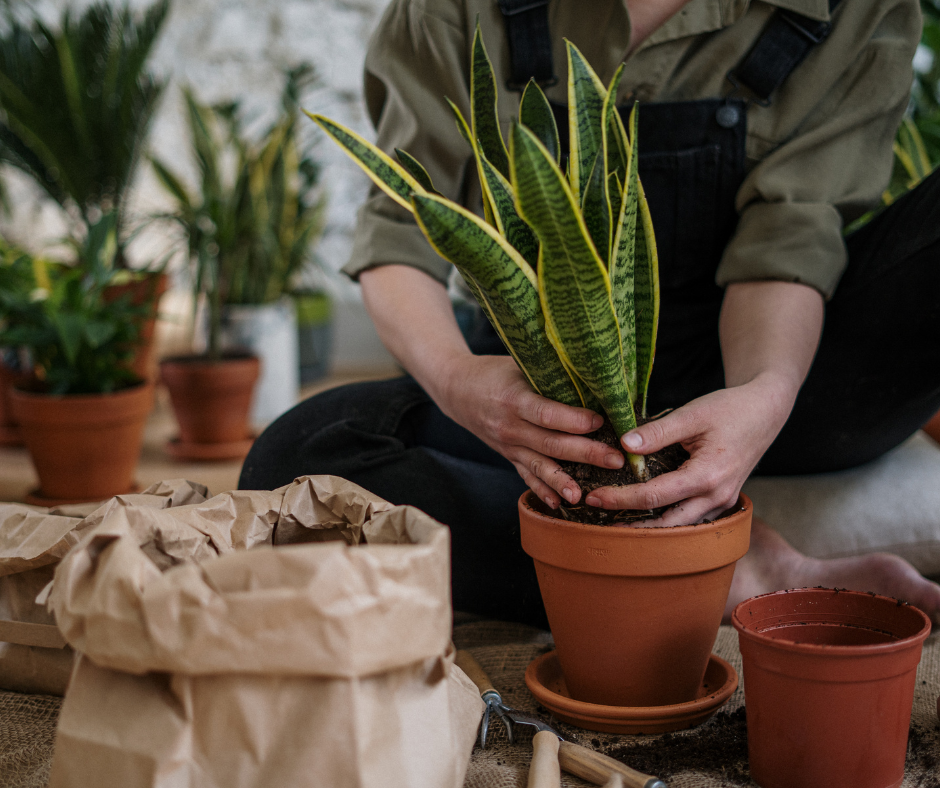

The choice of soil and pot is critical in ensuring the health of low-maintenance plants. Well-draining soil is essential to prevent waterlogging, a common issue that can lead to root rot in plants left unattended for long periods.
Similarly, pots with adequate drainage holes are necessary to allow excess water to escape. Selecting the right size and material for the pot also contributes to the plant’s overall health and maintenance level.
Recognizing Resilient Plant Species
Certain plant species inherently possess qualities that make them more resilient and low-maintenance. These plants often have a robust root system capable of storing water, leaves that efficiently retain moisture, and an overall structure that requires minimal pruning or care. Identifying and choosing such species is crucial for individuals who cannot consistently provide daily or weekly care for their houseplants.
Top Houseplants for Frequent Travelers
Snake Plant (Sansevieria)


The Snake Plant, or Sansevieria, is highly regarded for its hardiness and distinctive appearance, with tall, upright leaves that have unique variegated patterns. It thrives in a variety of light conditions, from low light to direct sunlight, and requires minimal watering, making it ideal for those often away from home. In addition to its low maintenance, the Snake Plant is celebrated for its air-purifying qualities, as it can effectively remove toxins like formaldehyde and benzene from indoor air.
ZZ Plant (Zamioculcas Zamiifolia)
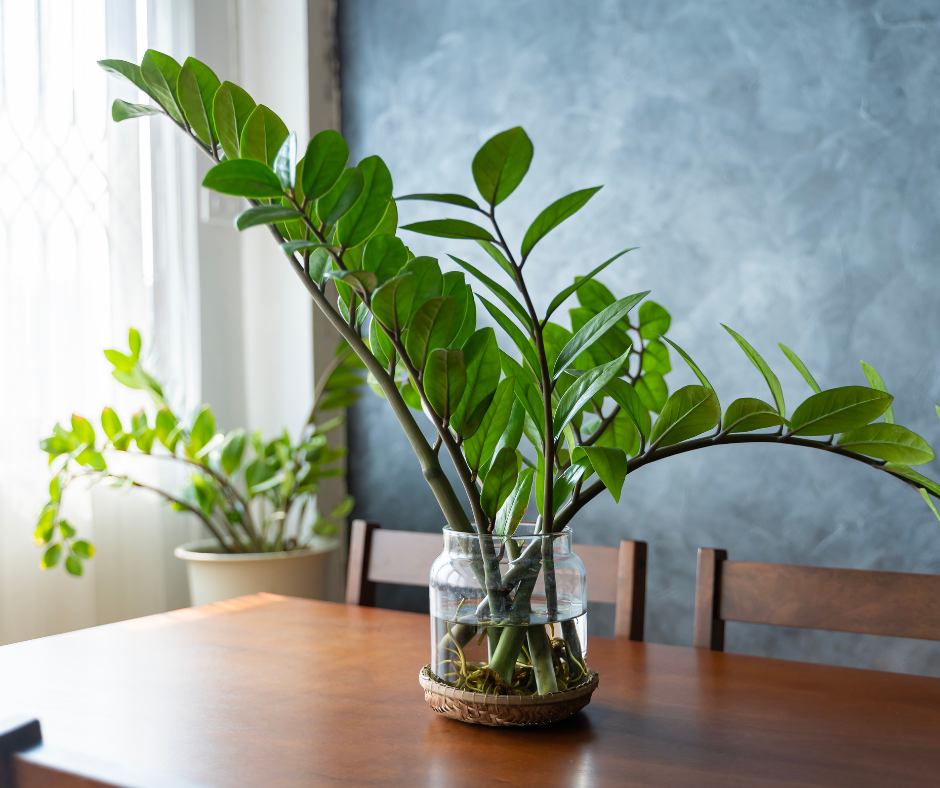

This low-maintenance plant is favored for its lush, waxy, dark green leaves that grow on stems which can reach impressive lengths. Exceptionally hardy, it can survive in low light conditions and requires water only when the soil is dry to the touch, typically every couple of weeks. The ZZ Plant’s ability to tolerate neglect and low-light environments makes it a top choice for travelers and those with busy lifestyles.
Spider Plant (Chlorophytum Comosum)
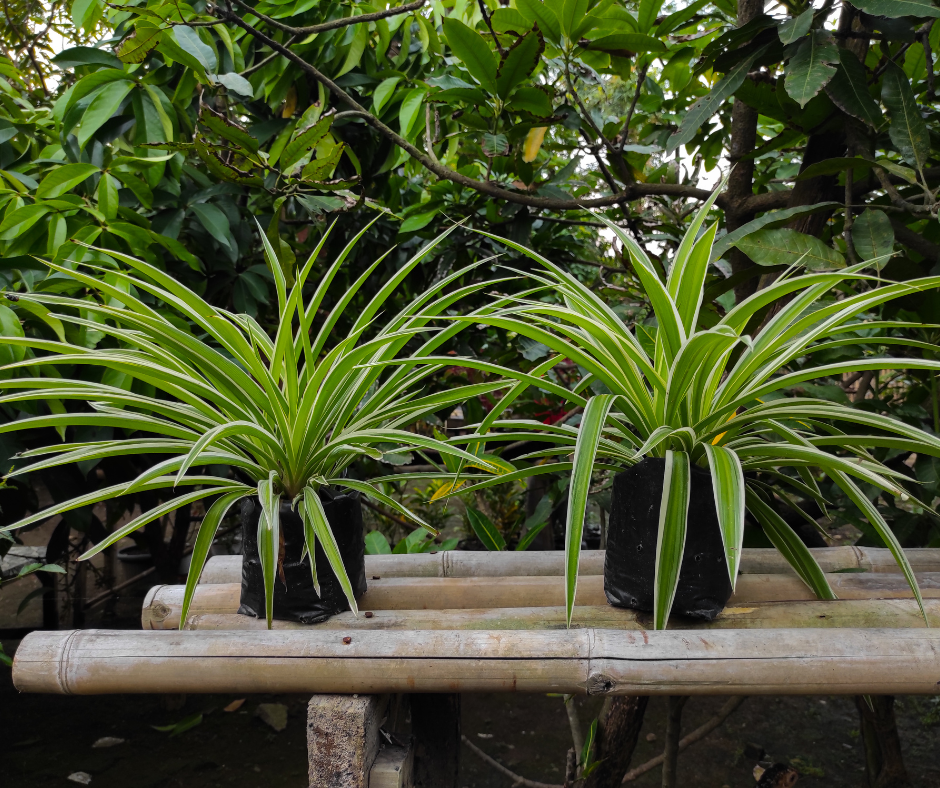

Known for its long, thin leaves and cascading growth, the Spider Plant is not only visually striking but also one of the easiest houseplants to care for. It prefers bright, indirect light and moderate watering, with the soil allowed to dry out between waterings. The Spider Plant is particularly effective at purifying indoor air by removing common household toxins and is known for its rapid growth, often producing baby plants or ‘spiderettes’ that can be easily repotted.
Aloe Vera


Aloe Vera is renowned for its succulent, gel-filled leaves, widely used for their soothing, healing properties in skincare. This plant prefers bright, indirect sunlight and requires very little water, making it a suitable choice for dry climates or homes with less humidity. In addition to its medicinal uses, Aloe Vera is also effective at filtering out common volatile organic compounds from the air, enhancing the indoor environment.
Pothos (Epipremnum Aureum)
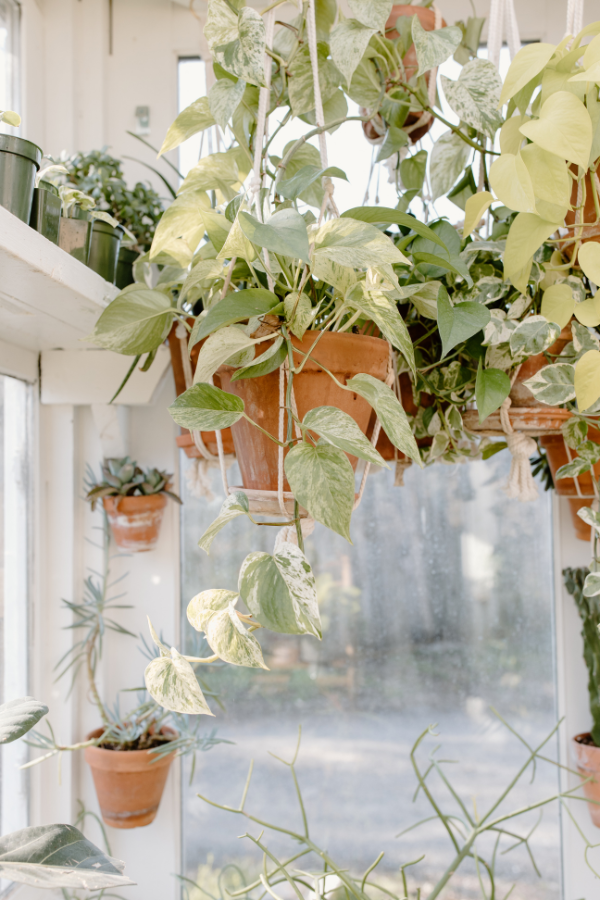

The Pothos, with its heart-shaped leaves, is a popular choice for indoor gardeners due to its adaptability and attractive appearance. It can thrive in a range of lighting conditions, from low light to bright, indirect light. Watering is infrequent, only necessary when the soil feels dry. Pothos is particularly noted for its ability to grow in water and its ease of propagation, making it a rewarding plant for novice and experienced gardeners alike.
Cacti and Succulents
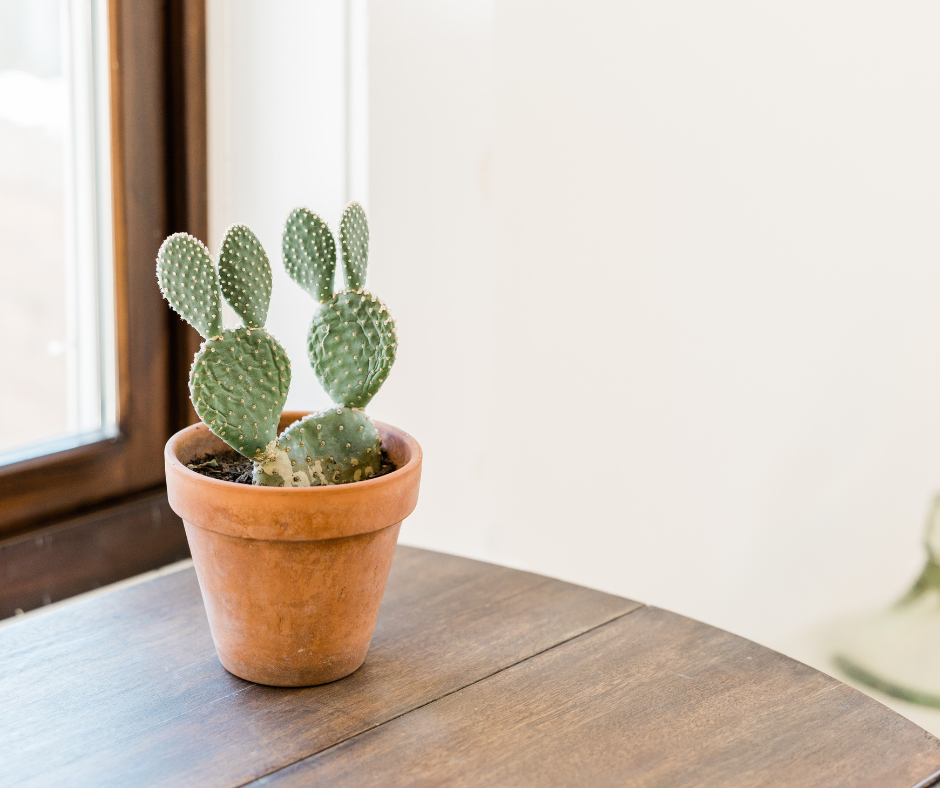

Cacti and succulents are diverse in their forms and colors, ranging from the small, rosette-shaped Echeveria to the tall, columnar Cereus. These plants are adapted to arid environments, storing water in their leaves or stems, which allows them to go long periods between waterings. They prefer bright light and well-draining soil, and their unique shapes and textures make them a stylish addition to any space. They are particularly suitable for busy individuals or frequent travelers due to their minimal watering requirements.
Rubber Plant (Ficus elastica)
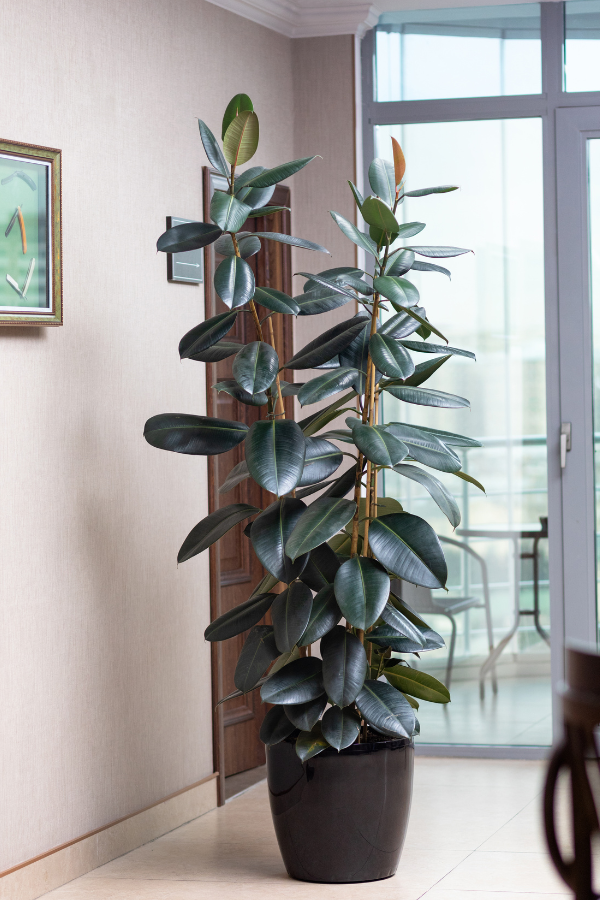

This indoor plant is known for its glossy, deep green leaves, which can also have burgundy or variegated patterns depending on the variety. It can grow quite large indoors, making it a striking choice for home or office spaces. The plant has a sturdy, upright growth habit, and its leaves are thick and leathery.
The Rubber Plant prefers bright, indirect light but can tolerate lower light conditions, making it versatile for different indoor environments. It requires watering only when the top inch of soil is dry, typically every 1-2 weeks, depending on the humidity and light conditions. Over-watering should be avoided as it can lead to root rot.
Fuel your creative fire & be a part of a supportive community that values how you love to live.
subscribe to our newsletter
*please check your Spam folder for the latest DesignDash Magazine issue immediately after subscription


Cast Iron Plant (Aspidistra elatior)
This low-maintenance houseplant is known for its toughness, the Cast Iron Plant features long, dark green leaves that grow straight out of the soil, creating a lush and hardy appearance. It is a slow-growing, understated plant with a strong, upright habit, making it a perfect low-maintenance indoor plant.
One of the most tolerant houseplants, the Cast Iron Plant thrives in a variety of light conditions. It tolerates low light, enjoys medium light, and is just fine in bright light too. It can even tolerate some degree of neglect, making it ideal for those who are away from home often. The watering needs are minimal; it requires watering only when the top inch of the soil is dry, generally every couple of weeks. It is also not fussy about humidity levels.
The Cast Iron Plant is highly adaptable and can withstand a range of indoor space conditions, including temperature fluctuations. It’s rarely troubled by pests and diseases, which contributes to its reputation as an almost indestructible houseplant. As long as you offer the Cast Iron Plant some well-drained soil, this plant grows happily!
Air Plants (Tillandsia)
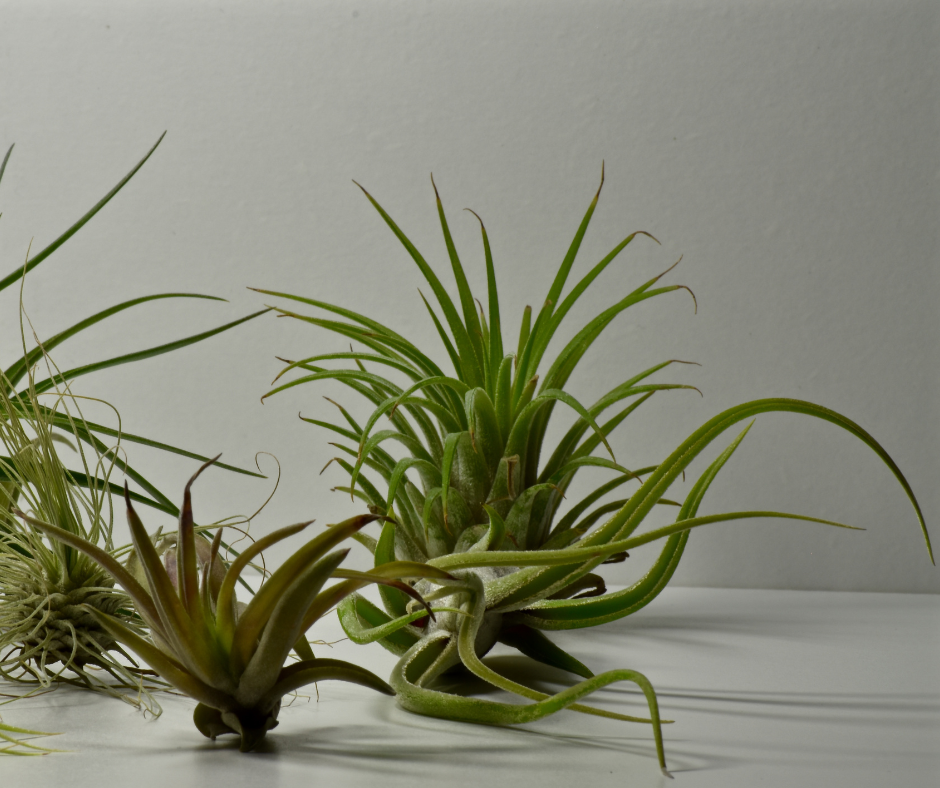

Air plants are part of the Bromeliad family and are known for their ability to grow without soil, absorbing moisture and nutrients through their leaves. They have a wide variety of shapes, sizes, and colors, and their root systems are primarily used for anchoring to hosts rather than for nutrient uptake.
These healthy plants require no soil, making them highly versatile and easy to display. They thrive in bright, indirect light and need to be watered about once a week. Watering can be done by soaking them in water for about 20-30 minutes, then shaking off excess water and allowing them to dry fully. They benefit from good air circulation and occasional misting in drier environments.
Money Tree (Pachira aquatica)
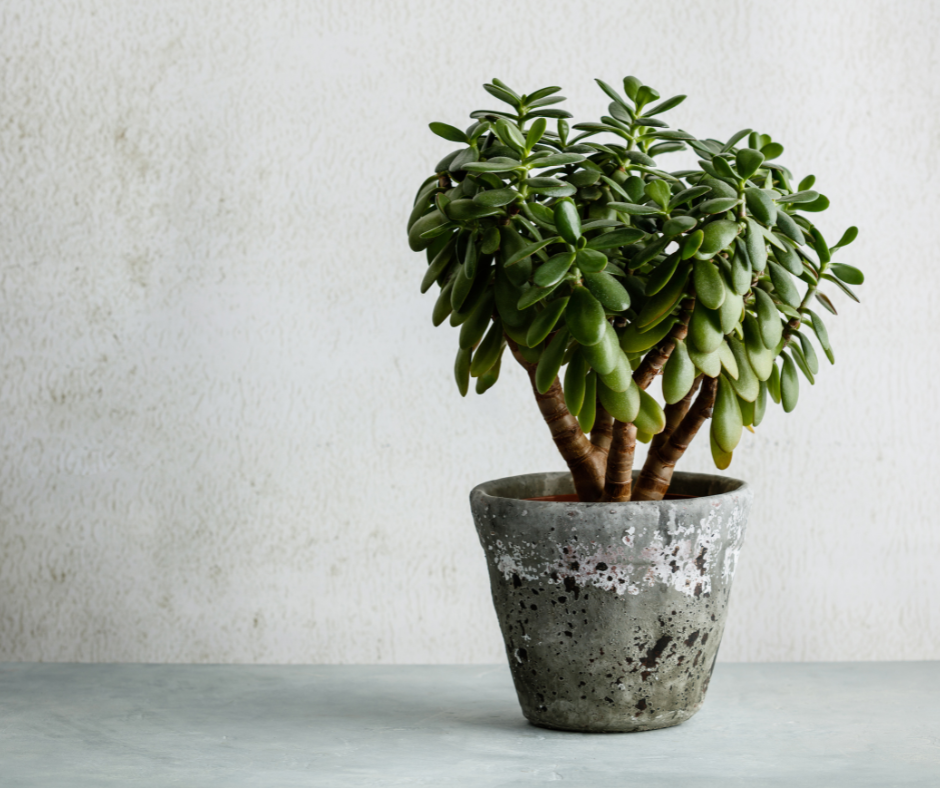

The Money Tree is a tropical wetland tree native to Central and South America. It is often cultivated with a braided trunk and has lush, green palmate leaves. The tree is believed to bring good luck and prosperity, making it a popular choice in both homes and offices.
It prefers bright, indirect light but can tolerate lower light conditions. It’s important to water the plant when the top 2-3 inches of soil are dry, usually every 1-2 weeks, depending on the humidity and temperature of the environment. Overwatering should be avoided as it can lead to root rot, which means this plant is ideal for forgetful plant parents. This plant also benefits from higher humidity and occasional misting. Consider other woody plants if searching for a low-maintenance option.
Tips for Plant Care Before Leaving on a Trip
Watering Strategies
Before embarking on a trip, it is essential to implement effective watering strategies for houseplants. This includes thorough watering of all plants to ensure adequate moisture is available throughout their root systems.
For plants that require consistent moisture, the soil should be moistened deeply but not waterlogged. For succulents and cacti, a lighter watering is sufficient. The timing of this watering session is crucial – it should be done as close to the departure time as possible to maximize the benefit.
Adjusting Plant Placement for Optimal Light
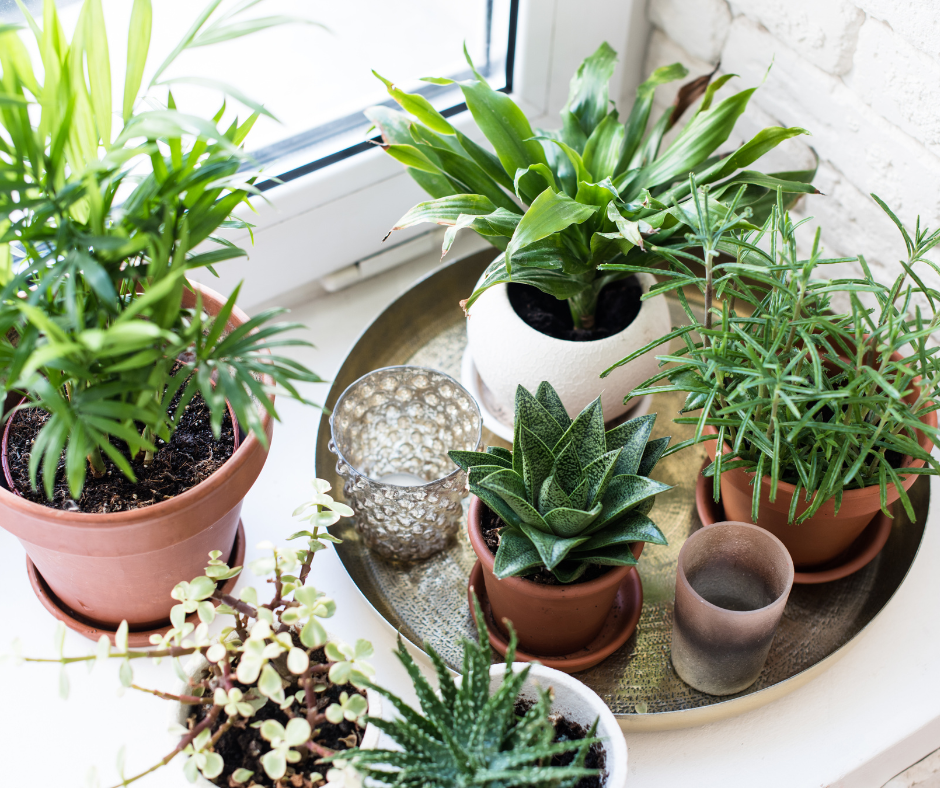

Adjusting the placement of plants to ensure they receive optimal light during an absence is vital. Plants that require bright, indirect sunlight should be positioned in a place where they can receive enough light without the risk of direct sun exposure, which could cause leaf burn.
For low-light plants, ensuring that they are in a well-lit room without direct sunlight is ideal. The goal is to provide a consistent light environment that aligns with each plant’s specific needs.
Using Self-Watering Systems or Plant Sitters
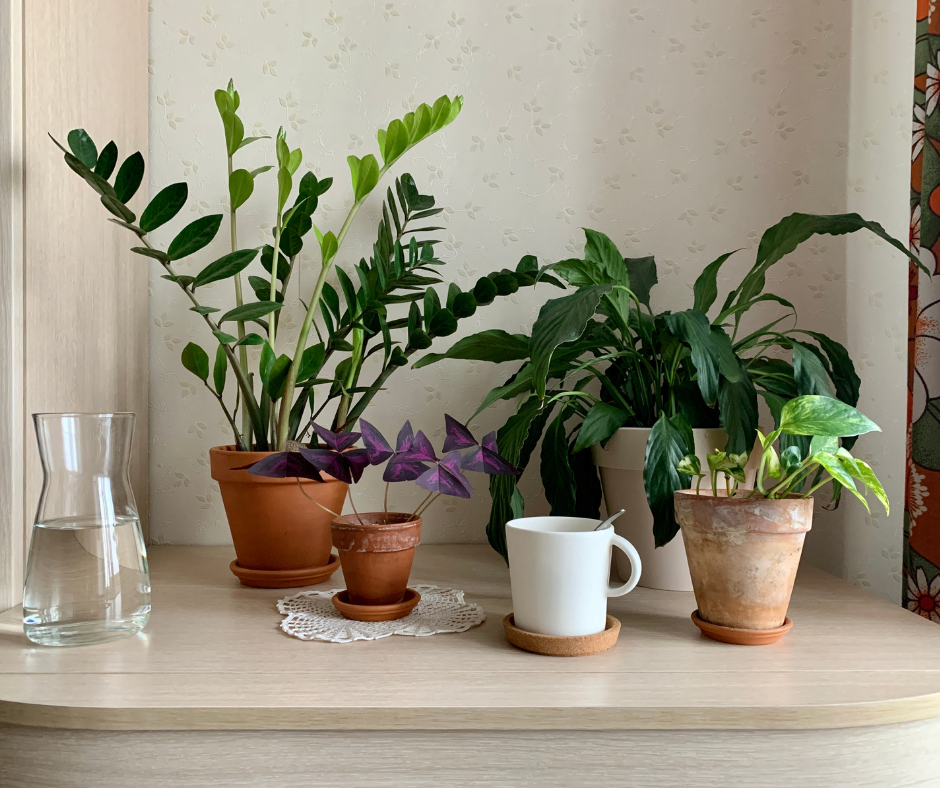

For extended absences, investing in self-watering systems can be a practical solution. These systems slowly release water into the soil over time, ensuring plants receive a consistent moisture level. Options range from commercially available self-watering pots to DIY solutions like water spikes or wicking cords.
Alternatively, enlisting a plant sitter who can water and monitor the plants can provide peace of mind. Instructions regarding the specific needs of each plant should be clearly communicated to the sitter to ensure proper care.
Troubleshooting Common Issues
Signs of Over or Under-Watering
Identifying the signs of over or under-watering is crucial for maintaining healthy houseplants. Over-watering typically results in yellowing leaves, a mushy base, and a damp or moldy soil odor, indicating rot.
Conversely, under-watering manifests as dry, brown, and crispy leaf edges, wilting, and dry soil. Adjusting the watering schedule based on these symptoms is essential for plant recovery.
Addressing Pest Issues in Low-Maintenance Plants
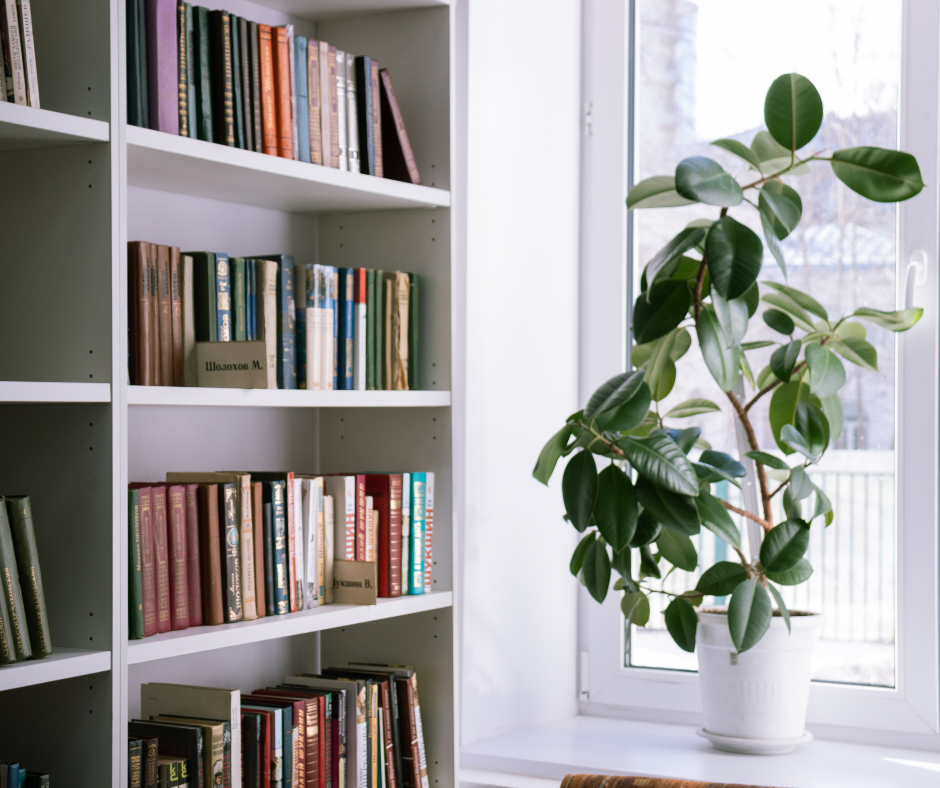

Pest infestations can occur even in low-maintenance plants. Common pests include spider mites, aphids, and mealybugs, visible as tiny bugs on the underside of leaves or as sticky residue on the plant and nearby surfaces.
Treatment involves isolating the infected plant, removing pests manually with a damp cloth, and applying natural insecticides like neem oil or insecticidal soap. Regular inspection and prompt action are key to controlling pest outbreaks.
Reviving Plants after Prolonged Absence
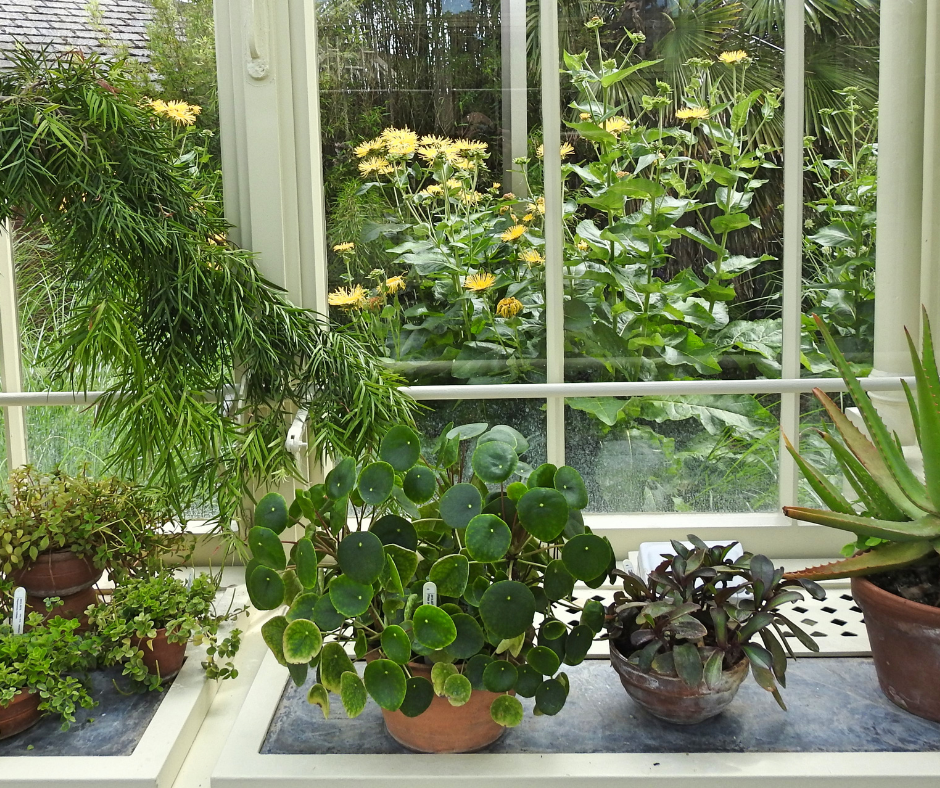

Returning from an extended absence to find a struggling plant requires immediate action. For plants that have been under-watered, thorough watering and a gradual reintroduction to light can help revive them.
Over-watered plants may need soil replacement or aeration to improve drainage. Pruning dead or yellow leaves and providing proper light and humidity can also aid in recovery. Patience and gradual care adjustments are vital for bringing plants back to health.
Benefits of Having and Caring for Houseplants
Psychological and Health Benefits
The presence of houseplants in living spaces has been linked to various psychological and health benefits. Research indicates that interacting with indoor plants can reduce psychological stress, enhance mood, and increase feelings of well-being.
Moreover, the act of caring for plants has therapeutic properties, often used in horticultural therapy to assist individuals with depression, anxiety, and dementia. The presence of greenery also contributes to improved concentration, productivity, and cognitive function, making them beneficial in both home and office environments.
Improving Air Quality and Ambiance in Living Spaces
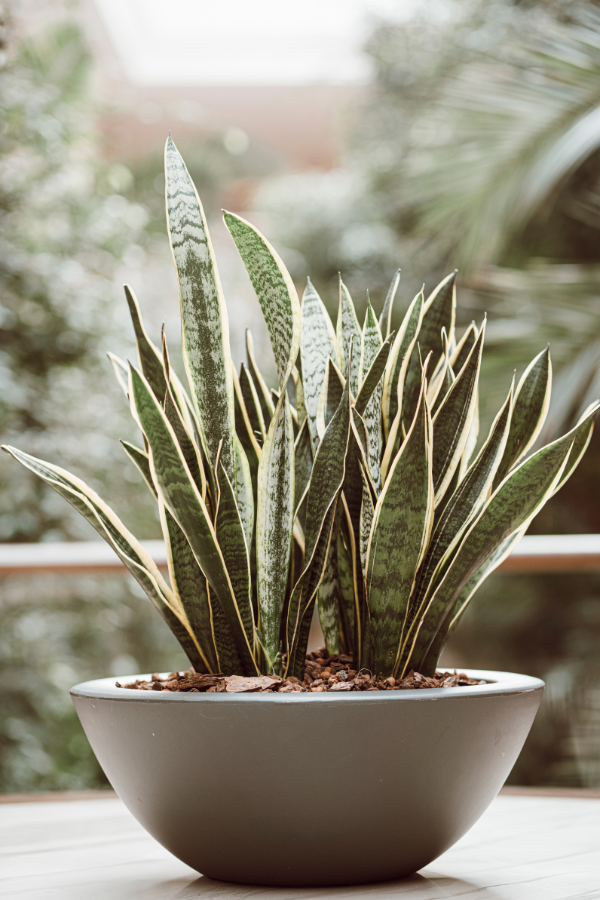

Houseplants play a significant role in improving indoor air quality. Many common indoor plants have the ability to filter out volatile organic compounds (VOCs) and other pollutants, thereby purifying the air. This is particularly beneficial in urban settings where indoor air quality can be compromised.
In addition to air purification, plants add aesthetic value to living spaces, creating a more inviting and tranquil atmosphere. Their visual appeal can transform the ambiance of a room, contributing to a more pleasant and relaxing environment.
Encouraging Responsibility and Routine in Plant Care
Caring for houseplants encourages a sense of responsibility and establishes a routine, which can be particularly beneficial for individuals seeking to add structure to their daily lives. The process of watering, pruning, and monitoring plant health requires regular attention and can instill a sense of accomplishment and mindfulness.
For many, the routine of plant care provides a therapeutic and rewarding experience, offering an opportunity to nurture and connect with nature, even in an indoor setting.
Final Thoughts on Caring for Low-Maintenance Indoor Plants
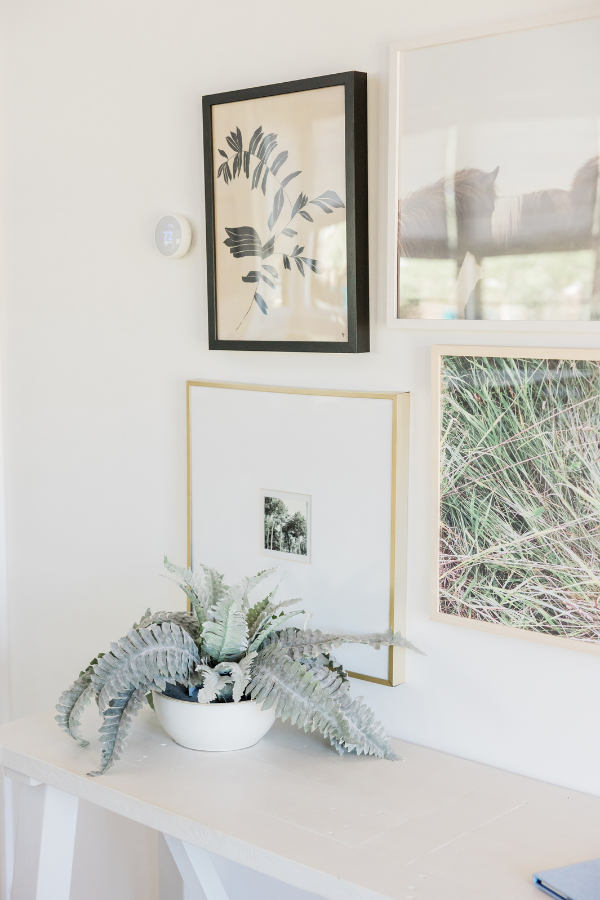

Despite your busy schedule, we hope you feel encouraged to embrace plant ownership, as these resilient species can thrive with minimal care and provide numerous psychological and environmental benefits. For successful plant care, it is still essential to understand the specific needs of each plant, especially in terms of watering, light, and soil requirements.
Adopting appropriate care strategies before leaving on trips, such as proper watering and placement adjustments, as well as considering self-watering systems or plant sitters, can further ensure the well-being of these plants. With these considerations, even the most frequent traveler can enjoy the rewards of plant ownership.
Which houseplants have you adopted? Let us know in the comments below!
Design Dash
Join us in designing a life you love.
-
That Digital Nomad Life: Tips for Running Your Business While Traveling the World
Learn about visas, finances, networking, and staying inspired while traveling the world as a digital nomad.
-
The Science of Serendipity: How to Use Unplanned Moments to Boost Your Business
Learn how to embrace serendipity—those unexpected yet meaningful moments—to spark innovation, build connections, and boost your business.
-
12 Tips for Creating a Gorgeous Thanksgiving Tablescape With Stuff You Already Own
Transform everyday items into a stunning Thanksgiving tablescape with these 12 simple tips. Learn how to layer textures, add natural elements, and create a welcoming table setting that reflects the spirit of gratitude and connection.
-
Helping Kids Understand Money: Fun and Practical Ways to Teach Financial Literacy
Help your kids develop financial literacy with these fun, age-appropriate strategies for teaching money management.
-
The Friendship Breakup: How to Let Go of Toxic Relationships Gracefully
A friendship breakup can be so much harder than a romantic breakup. Learn how to navigate the grief, set boundaries, and rebuild.
-
Designing a Morning Routine Based on Your Chronotype (And Why It Works)
Learn how to align with your natural energy patterns and transform your mornings by creating a routine tailored to your chronotype.








